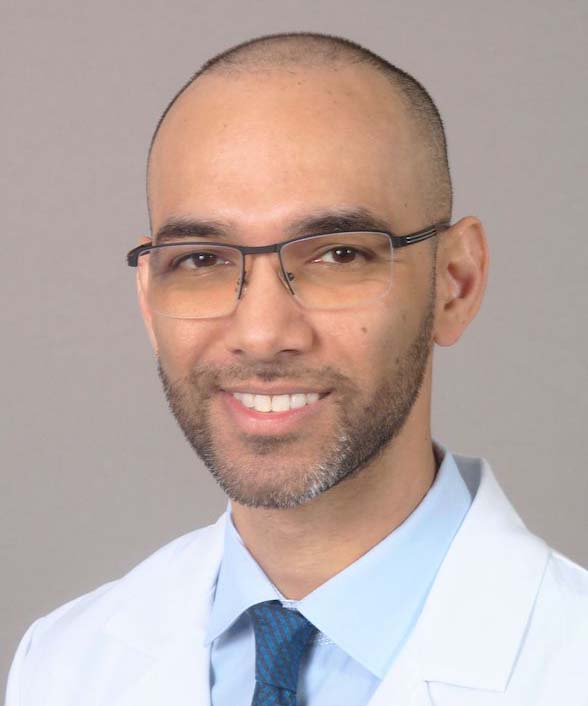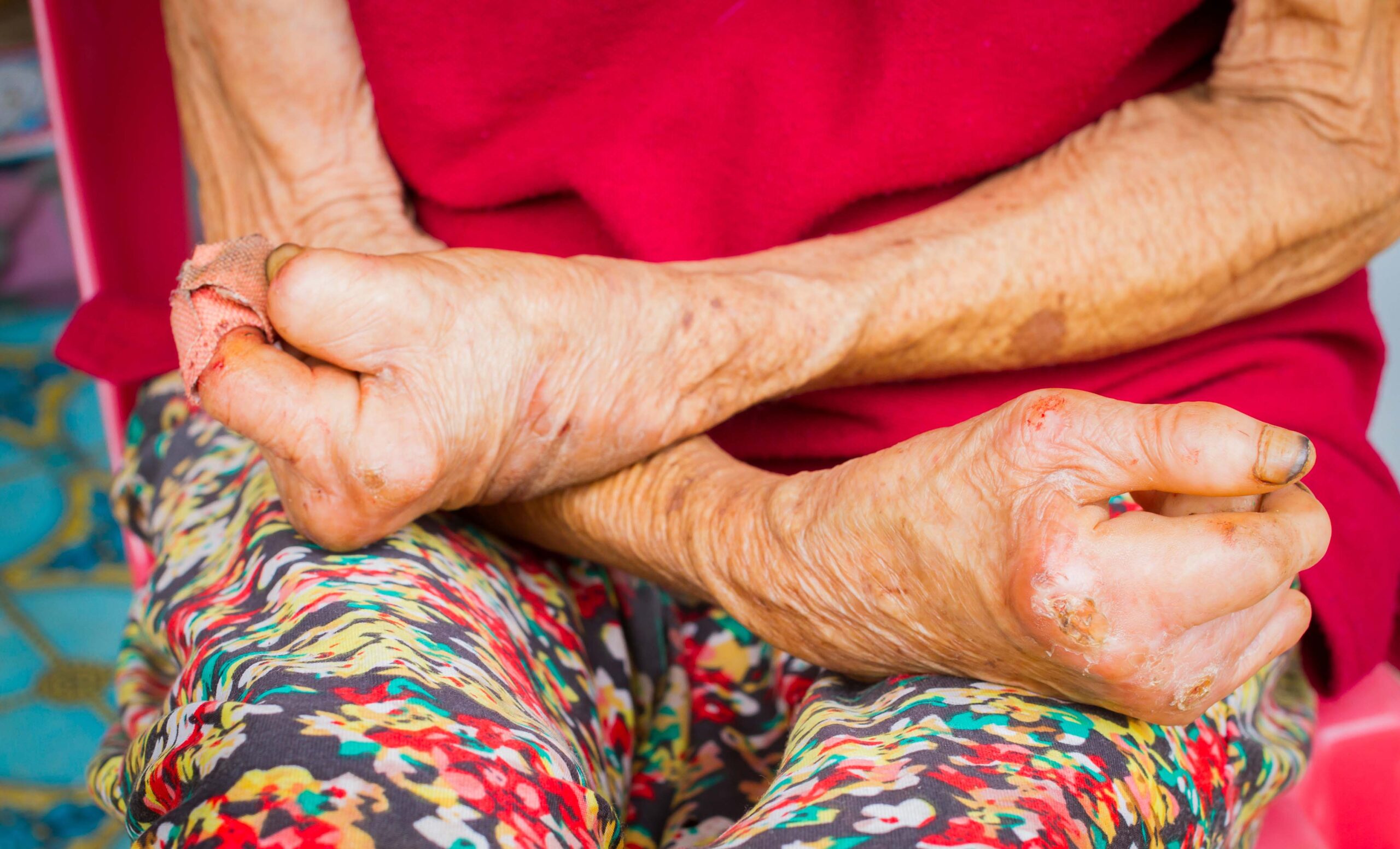Leprosy is curable, but the disease still exists in many regions. Bette Browne reports
Leprosy may conjure up chilling images stretching back to Biblical times, even though today the disease is treatable and curable. It still exists, however, in 120 countries, among them the United States (US). It is currently surging in central Florida amid fears that the bacteria causing it may have become endemic in the state.
The US Centres for Disease Control and Prevention (CDC) highlighted its concerns about the rise in the disease in a research report in July and is appealing to doctors to help identify it and reduce its spread. There are fewer than 200 cases a year in the US. Florida was among the top reporting states in 2020 with 27 cases and central Florida in particular accounted for 81 per cent of those and almost one-fifth of nationally reported cases.
Leprosy is a neglected tropical disease (NTD), with more than 200,000 new cases reported globally every year. The disease has usually been found in people with a history of foreign travel or in those who immigrated from areas where it is more common, such as parts of Asia, Africa, and South America. But that may now be changing, and the CDC said environmental reservoirs should be investigated as a possible source of transmission in the US.
Florida
“The absence of traditional risk factors in many recent cases of leprosy in Florida, coupled with the high proportion of residents who spend a great deal of time outdoors, supports the investigation into environmental reservoirs as a potential source of transmission,” the CDC research report said.
“I think the biggest question that we have would be in regards to that environmental reservoir (in Florida). We’ve noticed that there the soil specimens have shown Mycobacterium leprae (M. leprae) in the past. But what does that mean? Is that a mechanism of disease transmission, or is that just a simple finding that has no clinical relevance? So we need to hone in in the scientific community in terms of transmission,” Dr Rajiv Nathoo, a Florida dermatologist and one of the authors of the CDC report said in an interview in August with National Public Radio (NPR).
The agency report cited the case of a 54-year-old man who lives in central Florida. The man had not travelled domestically or internationally, had not had “prolonged contact with immigrants from leprosy-endemic countries”, and had denied exposure to armadillos, which are known to carry the disease. The man worked in landscaping, it said, and spent long periods of time outdoors, without risk factors for known transmission routes.
The man, a lifelong Central Florida resident, sought treatment at a dermatology clinic for a painful and progressively worsening rash. The rash initially appeared on his hands and feet and later spread to his trunk and face. He denied any travel or exposure to known leprosy sources.
After biopsies confirmed the man had leprosy, he was prescribed a triple therapy treatment plan under the direction of the US National Hansen’s Disease (Leprosy) Programme by an infectious disease specialist.
The CDC and local health departments are now collaborating to improve surveillance and promptly identify cases. Public awareness campaigns are also underway to educate people about symptoms, transmission routes, and available treatment options.
The CDC said that although the incidence of leprosy has been increasing, the rates of new diagnoses in people born outside of the US has been declining since 2002. “This information suggests that leprosy has become an endemic disease process in Florida, warranting further research into other methods of autochthonous transmission.”

Dr Rajiv Nathoo
“In summary, our case adds to the growing body of literature suggesting that central Florida represents an endemic location for leprosy. Travel to this area, even in the absence of other risk factors, should prompt consideration of leprosy in the appropriate clinical context. By increasing local physician efforts to report incidence and supporting further research to assess routes of transmission, a congruent effort can be made to identify and reduce the spread of the disease.”
The CDC report said physicians can help identify and reduce the spread of the disease through their efforts to report cases and their support in further research to assess routes of transmission.
The agency is careful to stress that while in the past leprosy was feared as a highly contagious, devastating disease, evidence has shown it does not spread easily to others and is easily treatable and curable. “Once someone starts treatment, they can no longer spread the disease to other people.” It cautions, however, that “if left untreated, the nerve damage can result in crippling of hands and feet, paralysis, and blindness”.
The CDC stated that about 150 people a year get infected with the disease in the US. The surge in Florida comes exactly 150 years since the discovery of M. leprae, the causative agent of leprosy, by the Norwegian physician Gerhard Henrik Armauer Hansen on February 28, 1873. Thus, leprosy is also known as Hansen’s disease. It chiefly affects the skin, mucous membranes of the upper respiratory tract, eyes, and certain peripheral nerves.
The current recommended treatment regimen consists of three drugs: Dapsone, rifampicin, and clofazimine. The combination is referred to as multi-drug therapy (MDT). MDT kills the pathogen and cures the patient. Early diagnosis and prompt treatment can help to prevent disabilities. The World Health Organisation (WHO) provides MDT free of charge.
Continued discrimination and social stigma in some parts of the world, however, has deterred people from coming forward for diagnosis and treatment. This has encouraged people to remain hidden and indirectly contributes to transmission, especially among vulnerable groups, including migrant populations, displaced communities, and very poor and isolated communities.
Combatting stigma and achieving early diagnosis are critical to interrupting transmission, the WHO emphasises. “It’s not highly infectious. Most folks are not susceptible to infection,” Dr Nathoo told NPR. “Some 95 per cent of the human population is not susceptible to infection.”
The WHO says the disease is known to occur at all ages ranging from early childhood to old age. It is transmitted via droplets, from the nose and mouth, during close and frequent contact with untreated cases.
Hansen’s disease is considered less infectious than tuberculosis. Its average incubation period is about three years, but it may be shorter or longer. Apart from indeterminate and borderline cases, the two main types of leprosy are tuberculoid and lepromatous.
Tuberculoid has few bacilli, but with nerve involvement can cause paralysis of some muscles, and disintegration of toe and finger bones. Lepromatous is characterised by lesions and swellings containing numerous bacilli, especially on the face and in the upper respiratory tract and vocal cords.
History
The earliest evidence of leprosy dates back over 4,000 years to a skeleton in India and there are references to leprosy not just in the Bible, but also in the Koran and the Torah.
The incidence of leprosy began to decline around the 1400s and had petered out of most European countries by the 1600s. This was due to improved living conditions, including nutrition and cleaner water and sanitation.
In the 1940s, a medicine called dapsone was used to treat leprosy. But by the 1960s, the M.leprae bacteria had started to develop resistance to dapsone monotherapy, so scientists developed a new multi-drug regimen of dapsone added to other drugs (rifampicin and clofazimine). Since 1981, when the WHO provided MDT across the world free of charge, it estimates that more than 16 million people have been treated with MDT over the past 40 years.
Covid-19
But for all that progress, however, the disease still exists in some of the world’s most populous regions, while the fight against it slowed during Covid. “It is time to accelerate activities stalled by the pandemic and redouble our efforts to work for a leprosy-free world,” declared Mr Yohei Sasakawa, the WHO Goodwill Ambassador for Leprosy Elimination, speaking on World Leprosy Day, which is held annually.
“Three years ago, in March 2020, the WHO declared the spread of Covid-19 to be a pandemic. Measures taken by governments around the world, such as lockdowns and other restrictions, took a heavy toll, particularly on vulnerable communities such as persons affected by leprosy, many of whom were already living in difficult circumstances. Many lost their livelihoods and were unable to access treatment for their disease or its after-effects.
Leprosy programmes were disrupted and this has led to a significant drop in new case numbers. The decrease masks the fact that cases are going undetected, which contributes to ongoing transmission of leprosy and risks more people developing disabilities.”

Mr Yohei Sasakawa
Concern
This is why the CDC research report has sparked growing concern among medical professionals in America, particularly in the south eastern states. “Leprosy has been historically uncommon in the US. Incidence peaked around 1983, and a drastic reduction in the annual number of documented cases occurred from the 1980s through 2000,” the CDC said. “However, since then, reports demonstrate a gradual increase in the incidence of leprosy in the US. The number of reported cases has more than doubled in the south eastern states over the last decade.”
There is also concern that several cases in central Florida have demonstrated no clear evidence of zoonotic exposure or traditionally known risk factors. While in the past, patients diagnosed with leprosy had often travelled to another country where the disease is more prevalent, or they had some contact with nine-banded armadillos, which are known to carry the bacteria that causes leprosy, the recent case examined by the CDC in Florida has not been tied to those two factors. This prompted CDC officials to conclude that the bacteria causing leprosy may have become endemic, or it may now be found naturally in Florida.
“While we don’t fully understand the increase or how it is spreading right now, most of the population of the US would not develop leprosy from it. In the US we had 159 cases in 2020, which is not a huge number, so there’s no need for panic,” said Dr Andrea Maderal, an Assistant Professor of Dermatology at the University of Miami Miller School of Medicine and Director of the Hansen’s Disease Programme, which is one of 16 federally funded programmes across the US.
“While there are some that hear leprosy and think it is this biblical disease that is incurable, it’s actually very treatable with antibiotic therapy,” Dr Maderal said in a news release by the university.
“We still don’t know exactly how people contract leprosy. In the past, we learned it was transmitted through respiratory droplets and mostly through prolonged close contact with a person who has it. So, if you live at home with other people who have a high level of this bacteria in their body, you may be at risk. But if you know someone has it in your home, you can now get evaluated to detect the disease early. And after a few doses of antibiotic therapy, the person with leprosy is no longer contagious to anyone.
“In addition, we have known for some time about the nine-banded armadillos in places like Florida, Louisiana, and Texas, which can transmit leprosy. People with direct contact with these animals had the highest risk from hunting, touching, skinning, or eating them. But there were also people with indirect contact that still acquired leprosy, so that is still being researched.”
In his speech on World Leprosy Day, Mr Sasakawa emphasised that myths and misconceptions about leprosy remain. “In various parts of the world, people who contract leprosy may find themselves isolated from society, family, and friends, while outdated laws remain in some countries that deny them the use of public facilities, or make leprosy grounds for divorce or dismissal.
“Discrimination can have a devastating effect and lead to self-stigma. I have met individuals affected by leprosy who question whether they have human rights. This is unacceptable and stems from society’s lack of understanding. I believe that if each of us takes the trouble to learn the facts about leprosy and share our knowledge, we can help create a world free of problems associated with the disease.”
In summary, our case adds to the growing body of literature suggesting that central Florida represents an endemic location for leprosy
At least 30 countries still have leprosy-related discriminatory laws in place, which affect the right to work, travel, and marry, according to Ms Alice Cruz, UN Special Rapporteur on the elimination of discrimination against people affected by leprosy and their family members. Ms Cruz said in a report last year that in India, the country with the highest number of cases, the national human rights commission has said there are 97 discriminatory legal provisions against those affected by leprosy.
“Strikingly, many of the existing discriminatory laws were enacted long after the discovery of a cure for leprosy in the 1950s,” the UN expert said. “Some of these laws have been enacted even during the first decades of the 21st Century. Moreover, such laws span the Global North and Global South.” She called on these countries to amend or abolish discriminatory legislation, policies, and customs as a priority, and to adopt comprehensive anti-discrimination laws in the battle to eradicate the disease.
LEPROSY: FACTS AND FIGURES
- Leprosy is treatable, curable, and difficult to contract. In fact, 95 per cent of adults cannot contract it because their immune system can fight off the bacteria that cause the disease.
- A person is not contagious after a few days of starting the treatment with antibiotics. But the treatment must be finished as prescribed (which may take up to two years) to make sure the infection does not come back.
- People with leprosy who are being treated with antibiotics can live a normal life among their family and friends and can continue to attend work or school.
- The number of new cases reported globally in 2019 was more than 200,000.
- Close to 15,000 children were diagnosed with the disease in 2019, more than 40 a day. An estimated two-to-three million people are living with leprosy-related disabilities globally.
- The countries with the highest number of new diagnoses in 2019 were India, Brazil, and Indonesia. Over half of all new cases are diagnosed in India, which remains home to a third of the world’s poor, a group disproportionately affected by the disease.
- Most new cases in the US in 2018 were reported from Arkansas, California, Florida, Hawaii, Louisiana, New York, and Texas.
- In some parts of the southern US, nine-banded armadillos have been found to carry the bacterium that causes the disease.
- Many people, especially those in developing and poor countries, can experience difficulty accessing healthcare due to the high costs of going to a doctor or travelling to a clinic familiar with the disease. Because of this, many don’t complete treatment or don’t receive it at all.
- Due the continued stigma against people with the disease, they may not seek help when first symptoms appear, causing delay in diagnosis and the development of disabilities.
- Girls and women, in particular, who are affected by the disease face gender and social discrimination. In some countries, the law allows a person to legally divorce a spouse because they are affected by the disease. This can leave many women destitute, homeless, and unable to care for their children.
- Many people living with the disease are unable to work due to the disability caused by it or may face stigma that prevents them from working.
- Elimination of leprosy as a public health problem globally, which is defined as prevalence of less than one per 10,000 population, was achieved in 2000 and in most countries by 2010.
- The reduction in the number of new cases has been gradual. According to data in 2019, Brazil, India, and Indonesia reported more than 10,000 new cases.
- A total of 13 other countries each reported 1,000-to-10, 000 new cases. These were: Bangladesh; Democratic Republic of the Congo; Ethiopia; Madagascar; Mozambique; Myanmar; Nepal; Nigeria; Philippines; Somalia; South Sudan; Sri Lanka; and the United Republic of Tanzania.
- The World Health Organisation’s leprosy strategy (2021–2030), Towards zero leprosy, is structured along the following four pillars: Implementation of integrated, country-owned zero leprosy road maps in all endemic countries; scaling up leprosy prevention alongside integrated active case detection; managing leprosy and its complications and preventing new disability; and combatting stigma and ensuring human rights are respected. (Sources CDC, WHO, UN)












Leave a Reply
You must be logged in to post a comment.